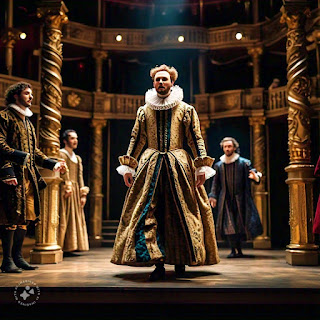UNION PUBLIC SERVICE COMMISSION(Civil Services (Main) Examination, 2024)
Introduction: Poetry is a form of literary expression that has captivated readers and listeners for centuries. It allows poets to convey their thoughts, emotions, and experiences in a condensed and artistic manner. While there are countless poetic forms and styles, poetry can be broadly categorized into three main kinds: Narrative, Lyric, and Dramatic. Each of these kinds has distinct characteristics, purposes, and examples that showcase the rich diversity within the world of poetry. Kinds of poetry : There are three great kinds of poetic writing: Narrative, Lyric, and Dramatic. Narrative poetry: Narrative poetry tells a story with a plot, characters, and a setting. It is one of the oldest and most straightforward forms of poetry. It tells a story, often in a chronological sequence, using poetic devices to create a vivid and engaging narrative. Some key points about narrative poetry include: Storytelling: Narrative poetry focuses on storytelling, using poetic language to c...



Hey, your answers are really helpful and relevant. thank you so much for writing.
ReplyDeleteThanks Mansi, for following my post.
DeleteIt's really usefull buddy. Will we get marks, if we write this content or we should elaborate it.
ReplyDeleteI'm glad you found the information useful! Regarding your question about whether you'll get marks for writing similar content or if you need to elaborate, here are my suggestions:
DeleteQuality Over Quantity: While the content you have is useful, marks are often awarded based on the depth and quality of your response. Simply rewriting the points might not be enough. You should aim to elaborate on each point with examples, explanations, and relevant details.
Originality: Ensure that your content is original and not copied directly. Teachers and examiners look for your understanding and ability to articulate ideas in your own words.
Structure and Clarity: Organize your answer logically. Start with an introduction, followed by detailed points, and conclude with a summary. Clear and coherent writing can significantly impact your marks.
Relevance: Make sure your content is relevant to the question asked. Irrelevant information, no matter how well-written, can detract from your overall score.
Critical Thinking: Demonstrating critical thinking can set your answer apart. Analyze the points, provide your insights, and discuss potential implications or applications.
Examples and Evidence: Where possible, use examples, case studies, or evidence to support your points. This shows a deeper understanding of the topic.
Conclusion: Summarize your main points and provide a concise conclusion. This helps in reinforcing your argument and leaves a lasting impression.
In summary, while the content you have is a good starting point, elaborating on it with additional details, examples, and a clear structure will likely result in better marks. Always aim to demonstrate a thorough understanding of the topic.
It's good..... Where can we get more content of literature?
ReplyDelete